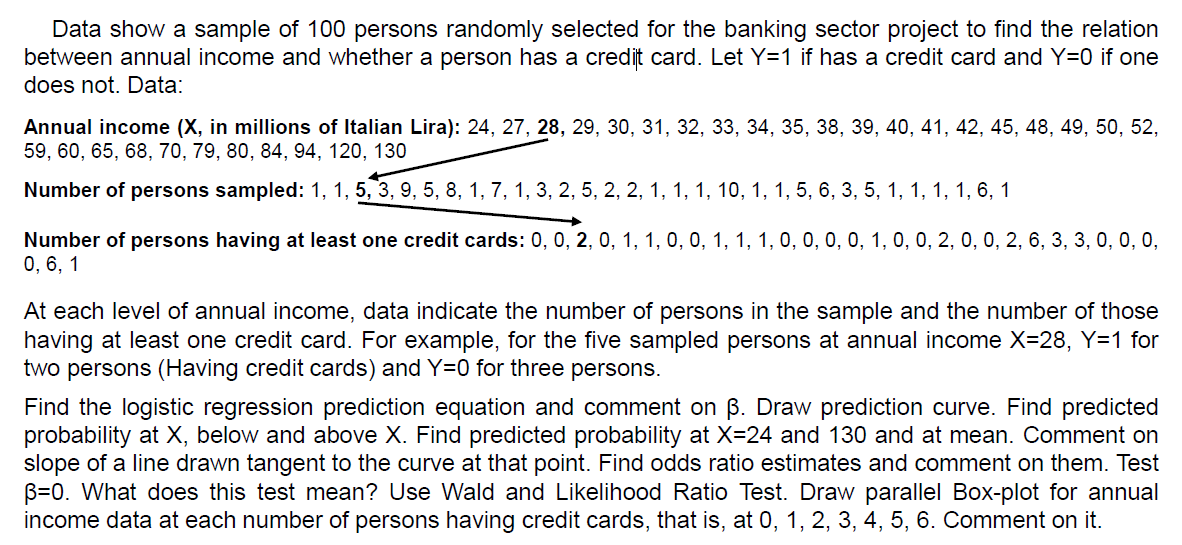Home /
Expert Answers /
Statistics and Probability /
data-show-a-sample-of-100-persons-randomly-selected-for-the-banking-sector-project-to-find-the-rel-pa739
(Solved): Data show a sample of 100 persons randomly selected for the banking sector project to find the rel ...
Data show a sample of 100 persons randomly selected for the banking sector project to find the relation between annual income and whether a person has a credit card. Let Y=1 if has a credit card and Y=0 if one does not. Data: Annual income (X, in millions of Italian Lira): 24, 27, 28, 29, 30, 31, 32, 33, 34, 35, 38, 39, 40, 41, 42, 45, 48, 49, 50, 52, 59, 60, 65, 68, 70, 79, 80, 84, 94, 120, 130 Number of persons sampled: 1, 1, 5, 3, 9, 5, 8, 1, 7, 1, 3, 2, 5, 2, 2, 1, 1, 1, 10, 1, 1, 5, 6, 3, 5, 1, 1, 1, 1, 6, 1 Number of persons having at least one credit cards: 0, 0, 2, 0, 1, 1, 0, 0, 1, 1, 1, 0, 0, 0, 0, 1, 0, 0, 2, 0, 0, 2, 6, 3, 3, 0, 0, 0, 0, 6, 1 At each level of annual income, data indicate the number of persons in the sample and the number of those having at least one credit card. For example, for the five sampled persons at annual income X=28, Y=1 for two persons (Having credit cards) and Y=0 for three persons. Find the logistic regression prediction equation and comment on ß. Draw prediction curve. Find predicted probability at X, below and above X. Find predicted probability at X=24 and 130 and at mean. Comment on slope of a line drawn tangent to the curve at that point. Find odds estimates and comment on them. Test B=0. What does this test mean? Use Wald and Likelihood Ratio Test. Draw parallel Box-plot for annual income data at each number of persons having credit cards, that is, at 0, 1, 2, 3, 4, 5, 6. Comment on it.
